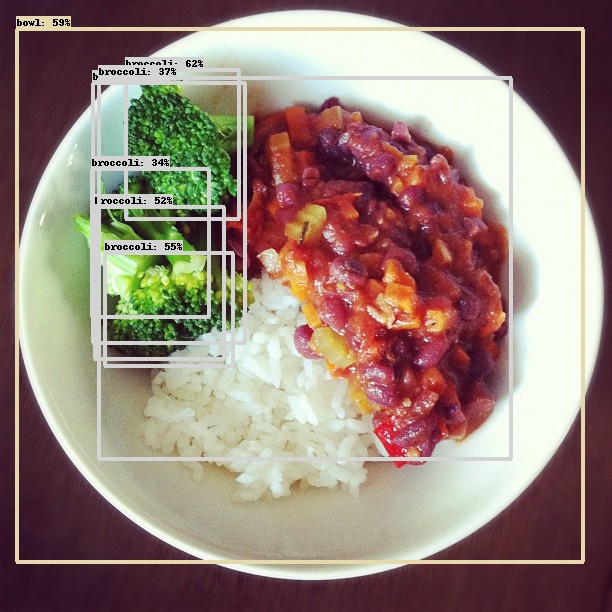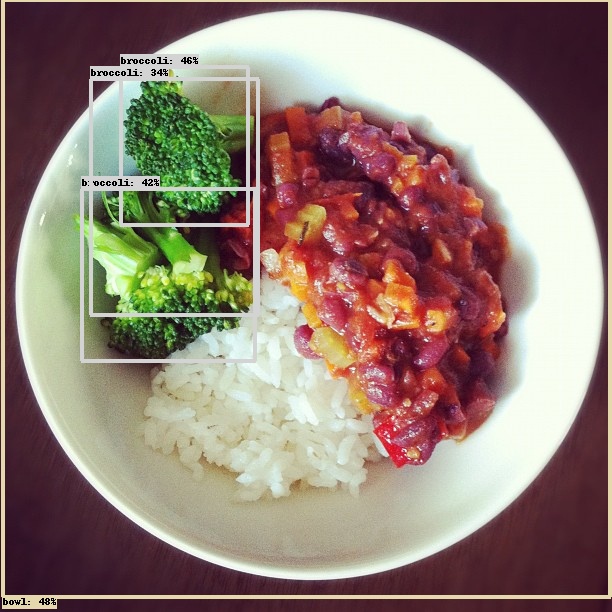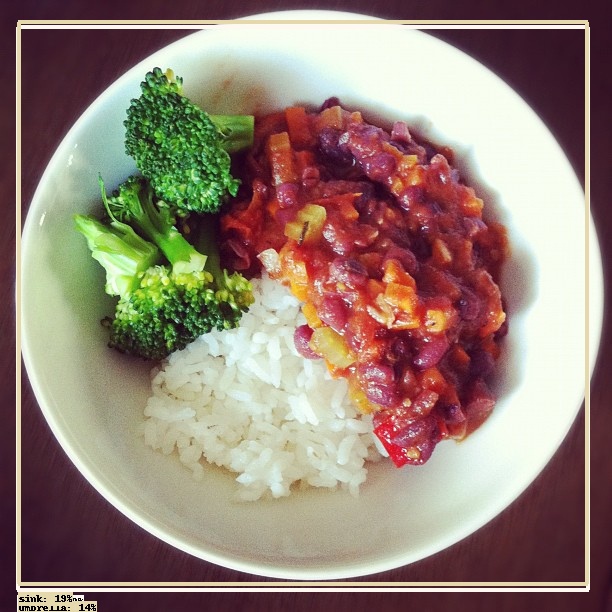Testing the Tensorflow Lite models
16 July, 2021
Introduction
In the first phase of the project we have evaluate the models based on statistical parameters before converting them to tflite model, in that phase only three models passed so these were converted. Now, we need to evaluate these models in tflite format and this time is going to be more visual, in other words, the boxes, classes and scores predicted for the model are going to be drawing in the original to observe if they are working properly in this format.
Script
To do these tests I have made a Python script that you need to pass an image to get another image with the boxes drawed. For these to work you need tensorflow 2, cv2, numpy and from the object detection API of Tensorflow the utils. Also, if you want to change the model you must modify MODEL_FILE to the name of the model that you are going to use.
from sys import argv
import tensorflow as tf
from cv2 import imread, resize, imwrite
from numpy import expand_dims, float32, array, copy, uint32
from utils import visualization_utils
# Name of the model to use
MODEL_FILE: str = 'model_efficient.tflite'
# Directory where the models are located
MODELS_DIRECTORY: str = 'models_tflite'
LABELS: list = ['person',
'bicycle',
'car',
'motorcycle',
'airplane',
'bus',
'train',
'truck',
'boat',
'traffic light',
'fire hydrant',
'street sign',
'stop sign',
'parking meter',
'bench',
'bird',
'cat',
'dog',
'horse',
'sheep',
'cow',
'elephant',
'bear',
'zebra',
'giraffe',
'hat',
'backpack',
'umbrella',
'shoe',
'eye glasses',
'handbag',
'tie',
'suitcase',
'frisbee',
'skis',
'snowboard',
'sports ball',
'kite',
'baseball bat',
'baseball glove',
'skateboard',
'surfboard',
'tennis racket',
'bottle',
'plate',
'wine glass',
'cup',
'fork',
'knife',
'spoon',
'bowl',
'banana',
'apple',
'sandwich',
'orange',
'broccoli',
'carrot',
'hot dog',
'pizza',
'donut',
'cake',
'chair',
'couch',
'potted plant',
'bed',
'mirror',
'dining table',
'window',
'desk',
'toilet',
'door',
'tv',
'laptop',
'mouse',
'remote',
'keyboard',
'cell phone',
'microwave',
'oven',
'toaster',
'sink',
'refrigerator',
'blender',
'book',
'clock',
'vase',
'scissors',
'teddy bear',
'hair drier',
'toothbrush',
'hair brush']
def insert_str(string: str, str_to_insert: str, index: int) -> str:
return string[:index] + str_to_insert + string[index:]
if __name__ == "__main__":
if len(argv) == 2:
# Convert the labels to the format used by the function that draws the detections
category_index: dict = {i: {"id": i, "name": LABELS[i]} for i in range(len(LABELS))}
# Select the resolution of the image according to the model that we are going to use
RESOLUTION_IMAGE: tuple
if MODEL_FILE == "model_centernet.tflite":
RESOLUTION_IMAGE = (320, 320)
elif MODEL_FILE == "model_efficient.tflite":
RESOLUTION_IMAGE = (448, 448)
elif MODEL_FILE == "model_ssd.tflite":
RESOLUTION_IMAGE = (300, 300)
# Read the model
interpreter: tf.lite.Interpreter = tf.lite.Interpreter(MODELS_DIRECTORY + "/" + MODEL_FILE)
interpreter.allocate_tensors()
# Getting the input and output tensors
input_details: list = interpreter.get_input_details()
output_details: list = interpreter.get_output_details()
# Load the image and adjust it to the model that we are going to use, also save the original resolution
image: array = imread(argv[1])
original_image: array = copy(image)
# Do the preprocessing according to the model, Efficient Det works with uint8 and does not need any
# preprocessing, while the others need the values in the range [-1,1]
if MODEL_FILE != "model_efficient.tflite":
image = (2.0 / 255.0) * image - 1.0
image = image.astype(float32)
image = resize(image, dsize=RESOLUTION_IMAGE)
image = expand_dims(image, axis=0)
# Use the model to get the predictions
interpreter.set_tensor(input_details[0]['index'], image)
interpreter.invoke()
# Get the output of the model
boxes: array = interpreter.get_tensor(output_details[0]['index'])
classes: array = interpreter.get_tensor(output_details[1]['index'])
scores: array = interpreter.get_tensor(output_details[2]['index'])
num_predictions: int = int(interpreter.get_tensor(output_details[3]['index'])[0])
print(boxes)
print(classes)
print(scores)
# Draw the boxes with their corresponding label and score
image = visualization_utils.visualize_boxes_and_labels_on_image_array(
original_image,
boxes[0],
classes[0].astype(uint32),
scores[0],
category_index,
use_normalized_coordinates=True,
min_score_thresh=0.3
)
# Finally, save the image with the detections
imwrite(insert_str(argv[1], "_detect", argv[1].index('.')), image)
print("The image has been saved")
else:
print('You must specify the filename of the image '
'that you want to use like this "python test_detection.py IMAGE_DIRECTORY'
Results
SSD MobileNet
The results of this model are pretty decent respect to the requirements needed

Efficient Det
As in the last model the results are good

CenterNet
In this case, the results do not reach the expectatives. For a minimum score of 0.3 all predictions are below this score so I reduce the minimum to 0.12 and the results do not make sense.

I tried converting the model another time to check if the fault was about a bad conversion from the original model, but the results did not improve.
Conclusion
After these evaluations we can conclude that SSD MobileNet and Efficient Det are the best options, meanwhile CenterNet does not work properly converted to tflite in this case. I think that the predictions of Efficient Det are a tiny better compared with SSD Mobile, so Efficient Det will be the model used in the component.
Alejandro Fernández Camello
